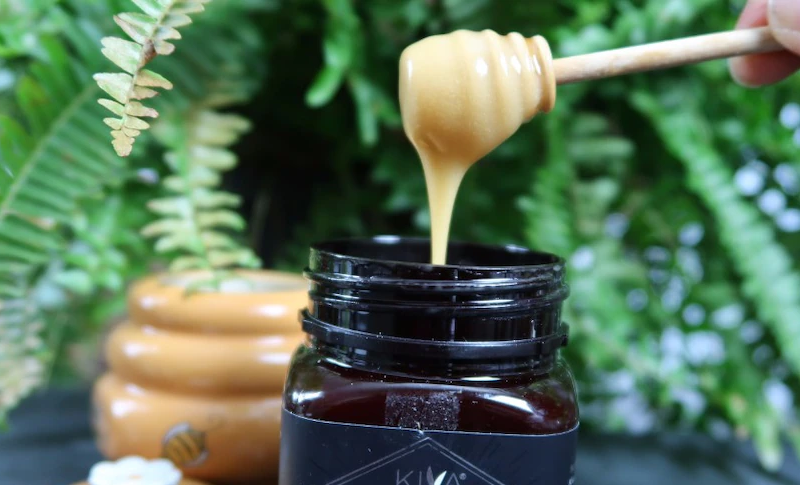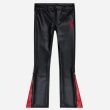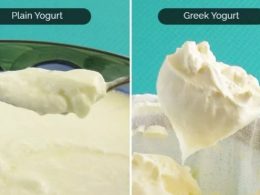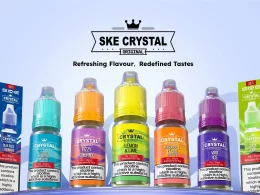Introduction
Manuka honey has gained global popularity for its powerful health benefits. Known for its antibacterial and healing properties, it’s often referred to as liquid gold. But with increasing demand comes the risk of imitation. Many products on the market claim to be Manuka honey, but not all of them meet the quality standards. If you want to enjoy the real benefits, it’s important to know how to tell if you’re buying real high-grade Manuka honey. In this guide, we’ll walk you through the key features, labels, and tests to look for when buying genuine Manuka honey.
What Makes Manuka Honey Special?
Manuka honey is produced by bees that pollinate the Manuka bush, native to New Zealand and parts of Australia. What makes it stand out is a compound called methylglyoxal (MGO). This gives Manuka honey its antibacterial strength, making it highly sought after for medical and skincare use.
Unlike regular honey, Manuka honey is also tested and certified for its purity and potency. That’s why it’s more expensive. But higher cost doesn’t always mean higher quality. Let’s explore how to be sure you’re buying the real thing.
Tip 1: Look for UMF or MGO Ratings
Authentic Manuka honey will have a UMF (Unique Manuka Factor) or MGO rating on the label. These ratings measure the honey’s antibacterial strength.
- UMF Rating: This rating is managed by the UMF Honey Association in New Zealand. It ranges from UMF 5+ to UMF 20+ or higher. A rating of UMF 10+ or above is considered medical-grade.
- MGO Rating: This refers to the amount of methylglyoxal in the honey. For example, MGO 100+ means the honey contains 100 milligrams of MGO per kilogram.
If a jar of Manuka honey doesn’t show either of these ratings, it’s a red flag. Always choose products with clear labeling from trusted certification groups.
Tip 2: Check the Country of Origin
Real Manuka honey comes mainly from New Zealand. Some is also made in Australia, but New Zealand is the top source. The label should clearly state the country of origin.
Look for statements like “Product of New Zealand” or “Made in New Zealand.” Some fake products may just say “Packed in” or “Distributed from,” which doesn’t confirm where the honey was actually made.
New Zealand’s government strictly regulates the export of Manuka honey. If it’s from New Zealand and UMF-certified, it’s likely real.
Tip 3: Review the Label Carefully
Real high-grade Manuka honey will have detailed labeling. Apart from the UMF or MGO rating and country of origin, the label should include:
- Batch number
- Expiry date
- Manufacturer or beekeeper details
These show that the honey is traceable and meets quality standards. Labels that are vague or poorly printed may be a sign of a fake product.
Also, beware of buzzwords like “bioactive,” “natural,” or “premium” without actual testing certifications. These words can be misleading.
Tip 4: Check the Price
Manuka honey isn’t cheap. If the price seems too good to be true, it probably is. Real, high-grade Manuka honey can cost significantly more than regular honey.
Lower-priced options may be mixed with other types of honey or diluted, losing the benefits that real Manuka offers. Investing in certified honey ensures you’re getting what you pay for.
Tip 5: Observe the Texture and Smell
Genuine Manuka honey is thick, smooth, and slightly grainy. It usually has a deep golden color and an earthy, herbal smell. If the honey is too runny or has a sharp sugary scent, it might not be real.
However, this test is not always foolproof, especially if you’re unfamiliar with the texture. It’s better used to support other methods.
Tip 6: Buy from Trusted Sources
Always buy Manuka honey from trusted stores or official websites. Reputable retailers are more likely to sell certified products. Avoid buying from random online marketplaces with no return policy or unclear product descriptions.
Look for sellers who provide lab test results or offer clear product authentication.
Tip 7: Consider the Grading System
Some jars of Manuka honey use multiple grading systems. For example, a product might show both MGO and UMF ratings. This is usually a good sign, as it reflects transparency.
Just make sure that the numbers align. For instance, UMF 10+ roughly equals MGO 263+. If a label shows a mismatch (like UMF 15+ but MGO 100+), it could be misleading.
Tip 8: Read Customer Reviews
Another helpful way to judge quality is by reading customer feedback. Look for detailed reviews mentioning taste, texture, and effectiveness. Be cautious of products with too many vague or overly positive reviews, which could be fake.
Real reviews from buyers who consistently reorder are usually a good sign of a high-quality product.
Tip 9: Verify with the Certification Body
If you’re unsure about a brand, check the official website of the UMF Honey Association. They list all licensed members and their products. You can confirm if the company is certified and trustworthy.
This adds an extra layer of confidence, especially when buying a new brand.
Tip 10: Understand Your Purpose
Are you using Manuka honey for general health or for specific health concerns? Knowing your purpose can help you choose the right strength.
- UMF 5+ or MGO 100+: Suitable for daily use and boosting immunity.
- UMF 10+ or MGO 263+: Great for healing wounds and digestive support.
- UMF 15+ or MGO 514+: Ideal for skin issues and medical needs.
Choosing the right grade ensures better results and avoids spending more than needed.
Conclusion
Manuka honey is a powerful natural product, but only if it’s real and high-grade. With so many products on the market, it’s easy to get misled by fake or low-quality options. By checking for UMF or MGO ratings, confirming the country of origin, reading labels carefully, and buying from trusted sources, you can be sure you’re making a wise choice. Real Manuka honey not only offers amazing health benefits but also gives you peace of mind that you’re investing in quality. Stay informed, shop smart, and enjoy the golden goodness of authentic Manuka honey every day.












